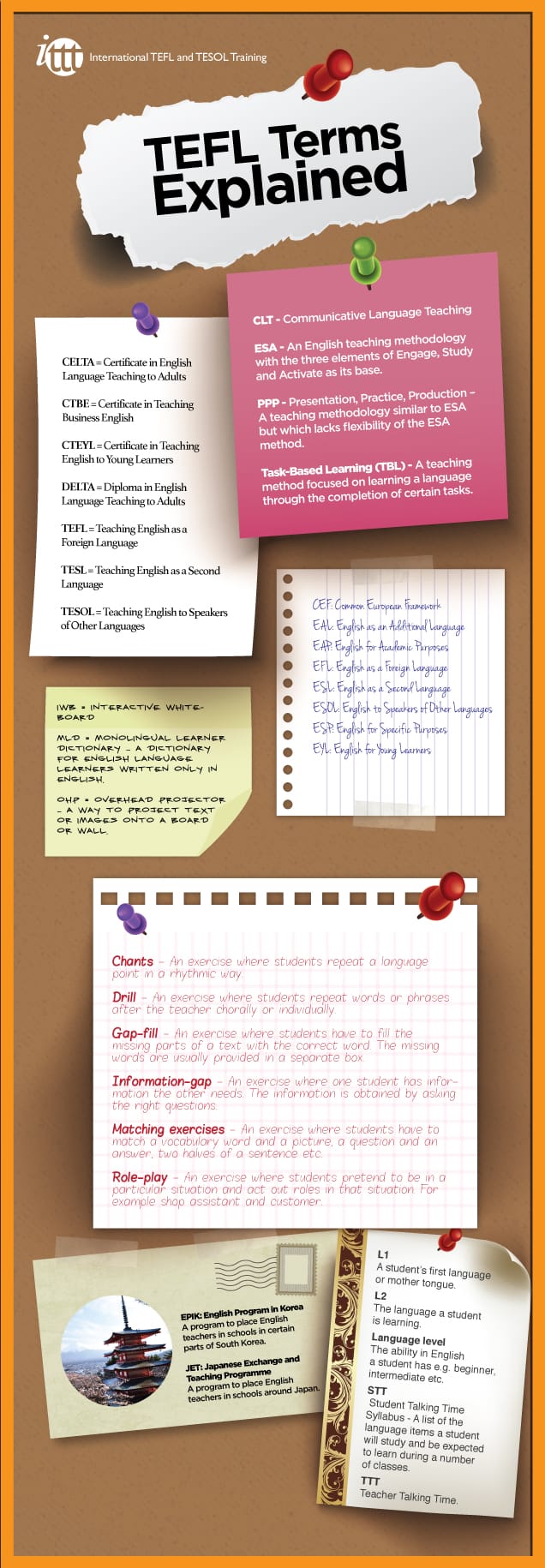As with most professions the world of Teaching English as a Foreign Language has many of its own particular and sometimes peculiar terms and jargon. Getting to grips with the wide array of acronyms in the industry can sometimes feel like learning a whole new language!
So if you have trouble telling the difference between your IWB (Interactive Whiteboard) and your OHP (Overhead Projector), this infographic is a great guide to what’s what in the English language teaching industry. Two of the most commonly used phrases in English teaching, and two that cause most confusion are TEFL and TESOL. TEFL stands for Teaching English as a Foreign Language and TESOL means Teaching English to Speakers of Other Languages. Another term, TESL, means Teaching English as a Second Language. TESL is generally used when talking about English learners studying in an English speaking country (e.g. UK/USA). TEFL usually refers to those who are studying English in their own country (e.g. China/Brazil), while TESOL has come to be a term that encompasses them both. Other confusing terms relate to certain exercises or activities that the teacher can use in class, examples of these are gap-fill exercises and an information gap exercises. A gap-fill is usually a worksheet comprising of several sentences with missing words, these words can sometimes be provided in a word box at the bottom of the worksheet and the student chooses the words from the box to fill the gaps. An information gap exercise on the other hand involves two students being given different and incomplete information about the same thing (e.g. a famous person) they then have to ask each other questions to find out the missing information. Some common terms that you might find on an EFL teachers lesson plan include: TTT, STT, L1 and L2. TTT stands for Teacher Talking Time and refers to the times in the lesson when the teacher will be doing most of the talking. STT refers to Student Talking Time and is used for periods when the teacher expects the students to do the majority of the speaking. L1 is the students’ first language, their mother tongue, L2 is the language they are being taught.

If you wish to display this infographic on your website, please copy and paste the code below into your own web pages.
View an enlarged version of this infographic:
big version


